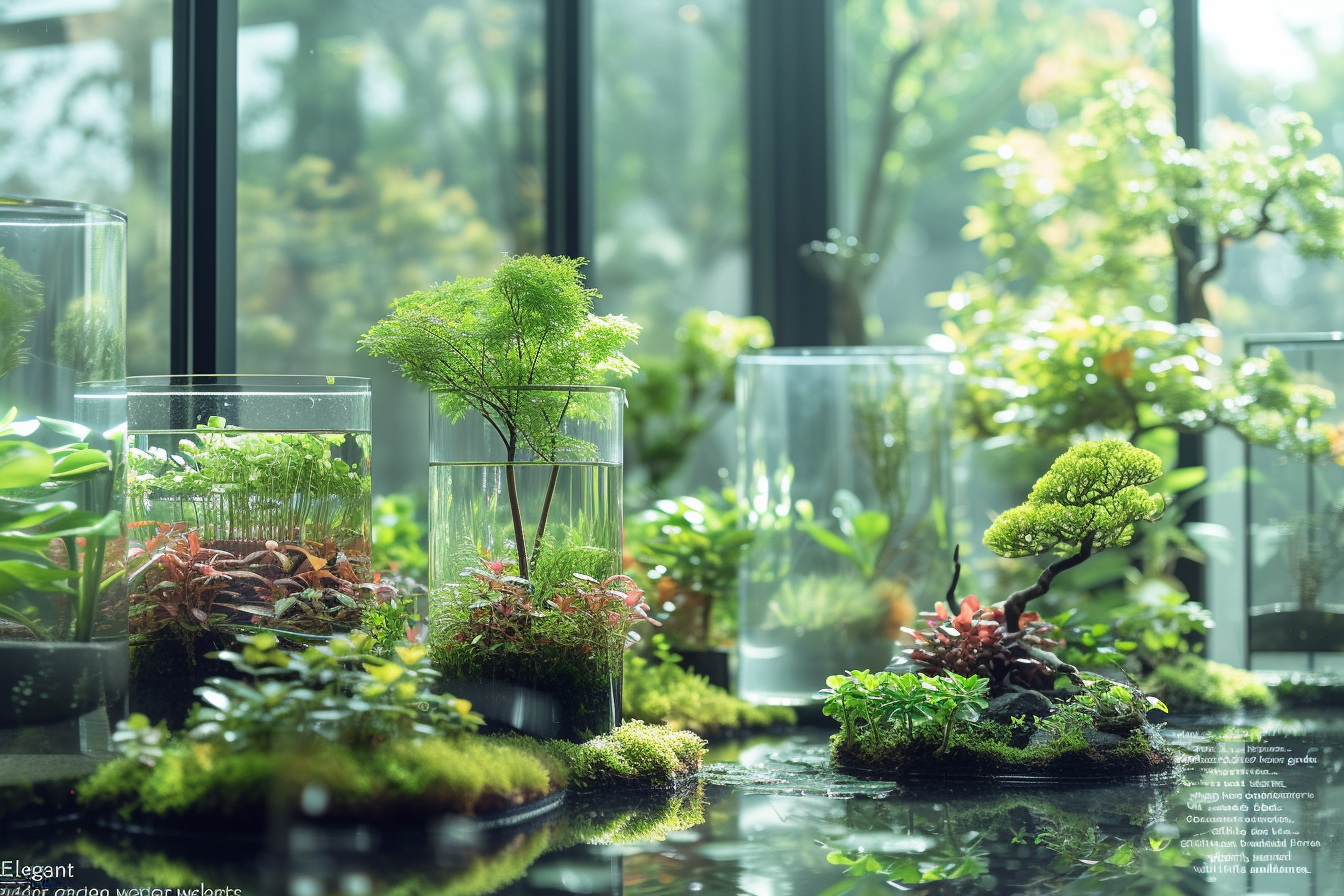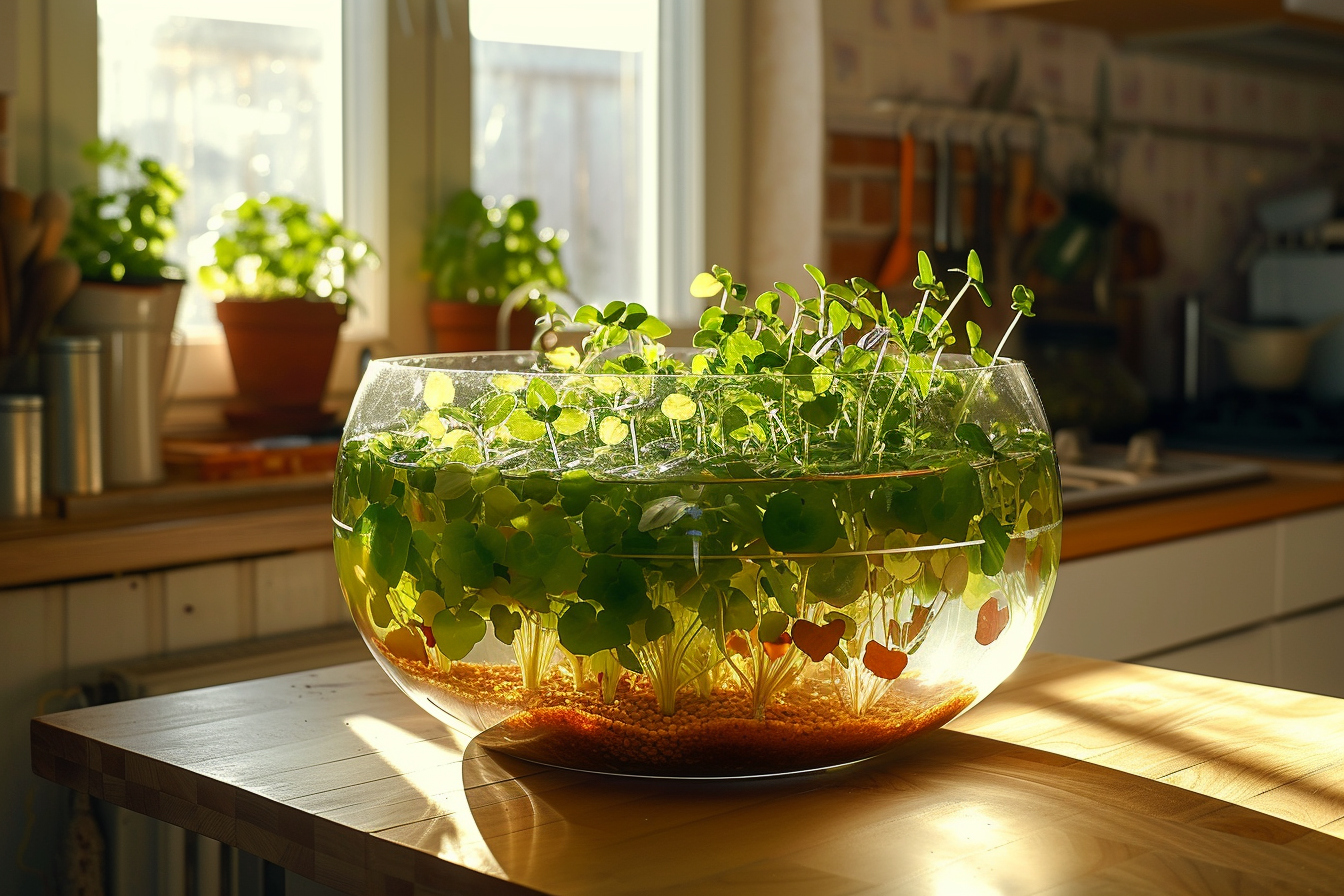Indoor water gardening opens up a world of luscious greenery and serene water features to those who wish to bring a piece of the tranquil outdoors into their home environment. Growing aquatic plants can be a fulfilling hobby that enhances your living space’s aesthetic while also potentially providing a peaceful respite from the hustle and bustle of daily life. Let’s dive deep into the key practices that lead to a thriving indoor water garden.
Understanding the basics of water gardening
To embark on your indoor water gardening journey, grasping the fundamentals is crucial. An aquatic garden is essentially an arrangement of plants that grows in or near water, which can range from simple container water gardens to elaborate indoor ponds.
Water Selection and Quality
Water, the lifeblood of your indoor garden, must be carefully considered. Tap water often contains chlorine which is detrimental to plants, so it is advisable to let the water sit for 24 hours before use or employ a dechlorinator. The pH of the water should be monitored regularly, aiming for a slightly acidic to neutral level for optimal plant health.
Container Choices
Your choice of container can make a statement just as much as the plants within it. It could be a glass aquarium, a ceramic pot, or anything that can hold water and fit into your interior design scheme. Ensure that the container is clean and free from contaminants that could harm the plants.
Selecting the right plants
Choosing aquatic plants for your indoor garden involves considering the plant’s needs alongside your aesthetic preferences. Some popular indoor aquatic plants include:
- Java Fern: A hardy plant that thrives in low-light conditions.
- Anubias: Ideal for beginners due to its low maintenance requirements.
- Water Lettuce: Adds a decorative floating element to your garden.
- Dwarf Lily: Introduces a pop of color with its blooms.
Lighting Considerations
Proper lighting is vital for the process of photosynthesis in aquatic plants. Natural light from a nearby window may suffice, but if not, artificial grow lights can provide the necessary spectrum of light. Typically, plants require around 10-12 hours of light per day.
Setting up the indoor aquatic garden
Before adding the plants to your chosen container, consider the following steps to set up a conducive environment:
- Substrate: Most aquatic plants need a substrate, such as gravel or specialized aquatic soil, to anchor their roots.
- Arrangement: When positioning plants, it’s aesthetic yet practical to place taller plants at the back and smaller ones at the front.
- Water Fill: Slowly fill the container with water to prevent disturbing the plants and substrate.
Maintenance and care
A successful indoor water garden requires consistent maintenance. Here are some tips to keep your plants flourishing:
- Water Changes: Perform partial water changes regularly to control nutrient levels and eliminate waste products.
- Fertilization: Aquatic plants benefit from specialized aquatic plant fertilizers. Use sparingly according to product instructions.
- Pruning: Keep your garden neat and allow light to reach all plants by trimming overgrown foliage.
- Pest Control: Look out for signs of pests such as algae, snails, or other insects, and manage them using eco-friendly solutions.
Temperature and Humidity
Keeping the water at a stable temperature that suits the particular plants in your garden is fundamental. Most aquatic plants fare well in temperatures ranging from 65°F to 75°F (18°C to 24°C). Humidity around the garden should mimic the plants’ natural environment, which might necessitate the use of a room humidifier.
Combating algae
Algae proliferation is a common challenge in water gardening. To mitigate this issue:
- Limit Light Exposure: Algae thrive in abundant light, so managing exposure can help control growth.
- Balanced Nutrients: Excess nutrients can fuel algae blooms, so avoid overfertilization.
- Algae-Eating Species: Introduce algae-eating fish or snails to keep the population in check.
Monitoring and Adjusting Water Chemistry
Regularly test the water for pH levels, hardness, and nutrient content. Make necessary adjustments using water conditioners specifically designed for aquatic plants.
Design and aesthetics

Make your indoor water garden a piece of living art by being mindful of design elements:
- Contrast and Texture: Combine various plant shapes, colors, and textures for a visually stimulating display.
- Incorporate Features: Adding elements like rocks or driftwood can give a naturalistic appearance to your garden.
- Create Movement: The subtle motion of floating plants or the use of a small fountain can enhance the dynamic quality of your garden.
Strategic Placement
For both the health of the plants and the enhancement of your décor, placing your water garden where it will receive adequate light and be visible for enjoyment is key. Avoid drafty areas or places with extreme temperature fluctuations.
Indoor water gardening can be a deeply rewarding endeavor, both in terms of horticultural success and personal enjoyment. By providing appropriate care and making informed choices about the environment and inhabitants of your aquatic garden, you can cultivate a verdant, vibrant, watery oasis within your home. Through careful planning, mindful maintenance, and a touch of creativity, the fluid grace of aquatic plants can become not only an engaging hobby but also an enchanting feature of your living space.

Leave a Reply